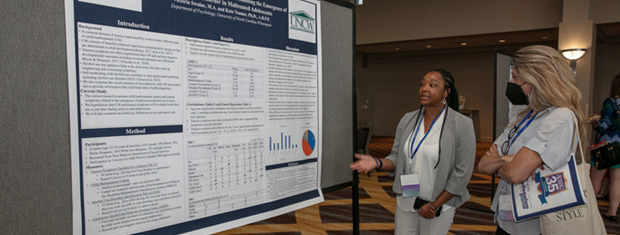




The APSAC Advisor is a peer reviewed quarterly news journal for professionals in the field of child abuse and neglect.
The APSAC Advisor provides succinct, data-based, practice-oriented articles that keep interdisciplinary professionals
informed of the latest developments in policy and practice the field of child maltreatment. It is designed to highlight
best practices in the field and publish original articles and current information about child maltreatment for professionals
from a variety of backgrounds including medicine, law, law enforcement, social work, child protective services, psychology,
public health and prevention in the U.S.
 If you wish to learn more about submitting an article to the Advisor, please click here.
If you wish to learn more about submitting an article to the Advisor, please click here.
This library contains Advisor issues dating back to the first issue in 1988. The most recent issue appears at the top.
Scroll down to select past issues by year and issue number. Once a publication appears in the box, you
can use the Enlarge button to open the document in a new window or tab (depending on how your browser is set up).
This will allow you to view the document with larger print.
To print a document, first use the Enlarge button to open the document in a new window or tab. Then use your browser's Print command.
To return here from a new tab, close the tab. To return from a new window, click your browser's Back button.
In the listing below, click on a year and issue number to see the articles in that publication.
2012 Number 1 and 2
In honor of APSAC’s 25th anniversary, some of our founders and former presidents have shared their memories from their time of leadership. Some have served during times of prosperity and others during times of strife, but all have provided undeniable leadership and vision for APSAC. It is because of their great dedication and sacrifice that APSAC is still a strong and thriving organization today.
APSAC, Social Work, and Child Welfare
Social work and child welfare professionals have been the backbone of APSAC’s membership since its inception. This article considers their intersection with APSAC and traces where they have journeyed together since 1987, starting with the Title IV-E Child Welfare Training Partnerships, then moving to other child welfare accomplishments related to Title IV-E as well as other legislation and lawsuits. Finally, the article explores more areas of joint accomplishment along with APSAC’s role in (a) responding to child sexual abuse, (b) emphasizing the need for evidence-based practice (EBP), (c) sharing membership and evidence with other EBP organizations, (d) recognizing the role of culture in working with consumers of child welfare and social work services, and (e) taking on the importance of workable caseloads.
Twenty-five Years of APSAC - The Medical Perspective
This past quarter-century almost precisely parallels my career as a child abuse pediatrician. I ended my pediatric residency in 1986 and approached Dr. Carole Jenny, who had become the medical director of Harborview’s Sexual Assault Center, to ask about specialized training in child abuse. She had been my continuity clinic director at Harborview’s general pediatric clinic. As I struggled with the direction of my pediatric career, the field of child abuse interested me. In 1988, I became a fellow at the Harborview Sexual Assault Center. No one could have been more surprised than I as to what would happen over the next 25 years.
A great deal of research in the past 25 years has contributed to our understanding of how best to interview children about suspected maltreatment. The disastrous failures of the highly publicized day care abuse cases led to a flood of research, initially emphasizing the failures of conventional approaches, and more recently high- lighting the potential for eliciting complete and accurate reports.
APSAC’s impact over 25 years far exceeds other organizations in spreading the word about the importance of culture on child maltreatment - and in shaping our interventions accordingly. In this article, I outline the many ways APSAC as an organization and its leaders have defined and highlighted the issue of cultural competence in child maltreatment, virtually from the organization’s inception, and how it continues to break ground in this field. Additionally, I describe the state of our understanding of culture in child maltreatment when APSAC first began and some of the major concerns that remain today.
The American Professional Society on the Abuse of Children (APSAC) has had a profound impact on the fields of law enforcement and prosecution. This essay includes a discussion on the benefits APSAC has brought to the nation’s law enforcement officers and prosecutors, and also the role APSAC has played in helping other professionals understand the critical role of criminal justice professionals in addressing child maltreatment. In addition to looking at these accomplishments, the authors suggest challenges facing APSAC and the child protection field in the years to come.
25 Years of APSAC - A Personal Historical, Law Enforcement Perspective
In May 1970, I began my 30-year career as a special agent with the FBI. Early in that career, I also became involved as an instructor in the FBI’s field police training program. After 10 years as a field investigator and part-time police instructor and getting my Master’s degree, I was transferred to the FBI Behavioral Science Unit (BSU) at the FBI Academy in Quantico. I was assigned to this Unit from January 1981 until I retired from the FBI in September 2000. Although the BSU was part of the FBI’s Training Division, its work involved more and more research and operational case consultation as well as training.
Criminal prosecution of cases involving the physical abuse of young children or in which children have passed away as a result of inflicted injuries continues to present challenges not often encountered in other forms of criminal prosecution. It has always been accepted that almost all acts of child abuse occur in secrecy, with no other eyewitnesses unless the witness is also involved in the abuse or is too young to provide reliable testimony. Almost without exception, this leaves prosecuting attorneys with the difficult task of proving what happened, who did it, and when it happened through circumstantial evidence. In some cases it is clear that someone inflicted an injury or set of injuries upon the child; however, in other cases the injuries may have been the result of accident or may have been inflicted by another person and only thorough investigation allow proof beyond a reasonable doubt that they were caused by abuse.
Evidence-Based Mental Health Treatment: A 25-Year Glance at Past, Present and Future
The 25th anniversary of the American Professional Society for the Abuse of Children (APSAC) calls us to reflect on how far mental health treatment for abused and neglected children and their families has come over this quarter century and the role of APSAC in shifting traditional thinking about children’s mental health needs.
The Promise of Prevention: Expanding With Quality
Despite recent declines in substantiated cases of physical abuse and neglect, child maltreatment remains a substantial threat to a child’s well-being and healthy development. In 2009, over 3 million children were reported as potential victims of maltreatment. The risk for harm is particularly high for children living in the most disadvantaged communities, including those living in extreme poverty or those living with caretakers who are unable or unwilling to care for them due to chronic problems of substance abuse, mental health disorders, or domestic violence. In 2009, an estimated 1,770 children - or over 4.8 children a day were identified as fatal victims of maltreatment. As in the past, the majority of these children - over 80% - were under the age of 4 (USDHHS, 2011). While child maltreatment is neither inevitable nor intractable, protecting children remains challenging.
The purpose of Journal Highlights is to alert readers to current literature on child abuse. Selected articles from journals representing the variety of disciplines reflected in APSAC's membership are presented in the form of an annotated bibliography.
APSAC Advisor 24(1-2): Full Issue